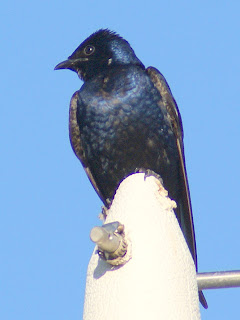.
Late on Saturday morning the rookery at Smith Oaks was in full swing.As always, adult Great Egrets looked magnificent as they flew past the observation platforms.
Some of the Great Egrets had nested late and still had very young chicks to care for.
However, most of the Great Egret chicks were already big enough to groom themselves ...
often with surprisingly good results.
Most of the color at the rookery is added by the Roseate Spoonbills.
Our main reason for visiting the rookery was to see if the Spoonbill chicks had hatched. Many of them had, even if the baby birds were only just visible through the greenery.
Some of the chicks were much more advanced and were already venturing alone down to the water's edge.
Like all parents, some the adult Spoonbills waited anxiously for their young to return.
This adult Spoonbill seemed to be running a little late, since it was still collecting sticks for nest building.
Snowy and Cattle Egrets and Tricolored Herons had also nested successfully but it was impossible to see into their nests. However, we could see that the Double-crested Cormorants were busy raising broods that were now almost too big for their nests.
Since they were much smaller than the other nesting birds, it was easy to overlook the Common Moorhens, some of whose chicks were also exploring the water's edge.
As usual, all the birds had to keep an eye out for alligators lying in wait in the water and on the island.
Our final sighting was of a very different kind of bird. I would have missed this Yellow-billed Cuckoo - one of my target birds for the weekend - if another birder hadn't spotted it in the bushes below one of the platforms.
Although Dee and I were planning to return to the rookery at sunset, we set of to have lunch at Anahuac NWR. On our most recent visit, three weeks earlier, the refuge had produced an array of interesting birds, including Clapper/King Rails, Soras and Least Bitterns. So we were hoping that this visit would be equally productive.
.
























































